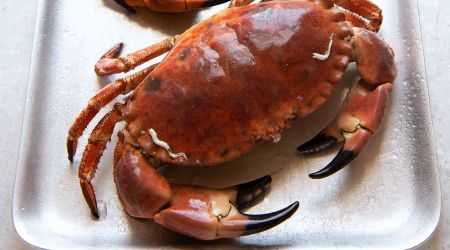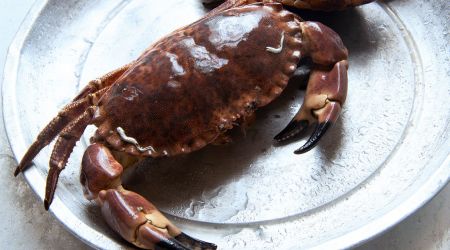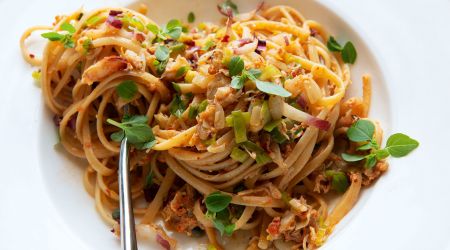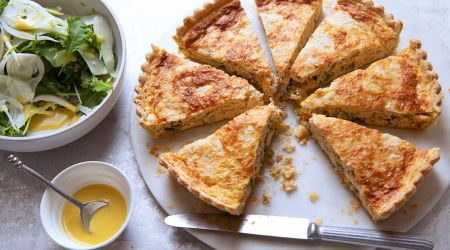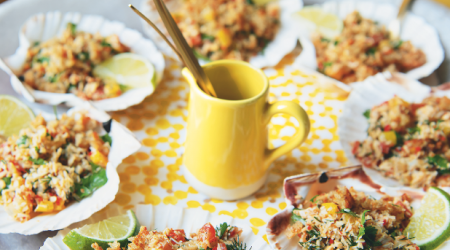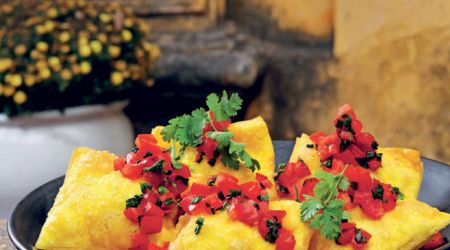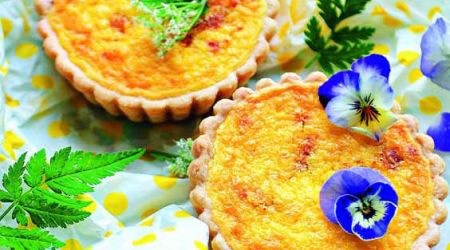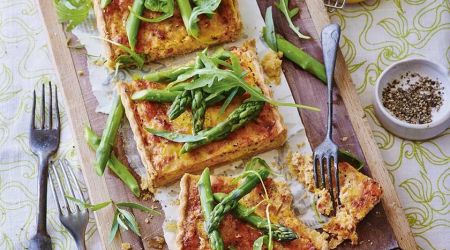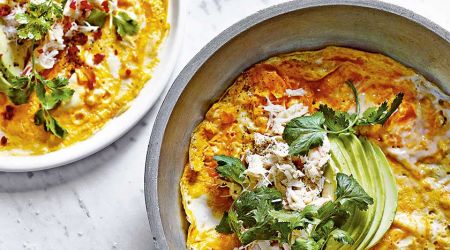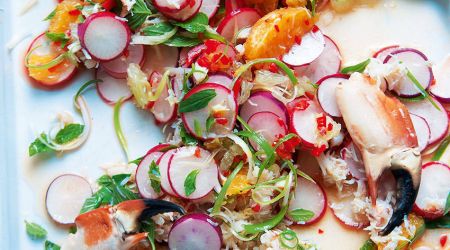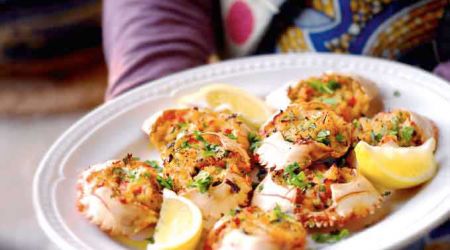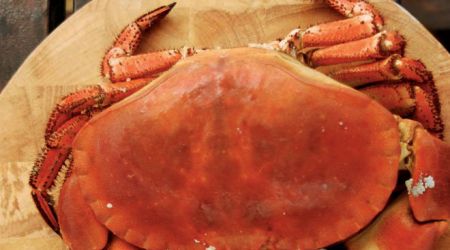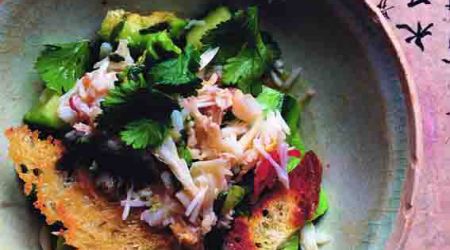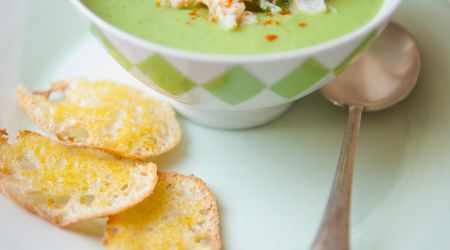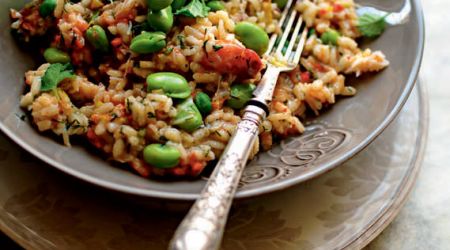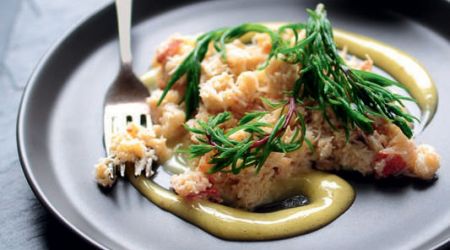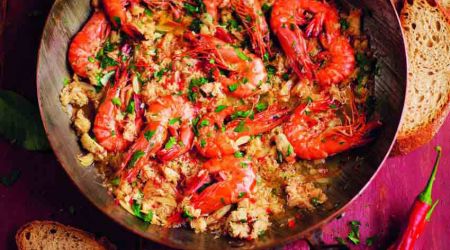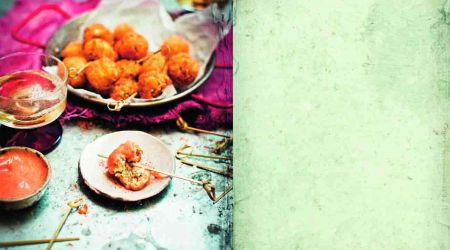Crab
Snow white meets earthy brown in this, the most delicious of crustacea. Quick to cook but time-consuming to eat, the sweet flavour is worthy reward for the effort. Clarissa Hyman gets cracking...
Are you a picker or a piler? When it comes to eating crab, the world divides in two: those who steadily, if somewhat messily, pick and eat morsels as they go, and those who play the long game and fastidiously excavate the crab meat into a neat mound to be eaten in self-satisfied delayed gratification. Whichever approach you favour, the rewards repay all that pulling, cracking, picking and poking of the crustacean’s nooks and crannies; the exploration of its many hidden pockets of contrasting textures and flavours. It always strikes me as curious that the removal of all the meat is called ‘dressing’ a crab, when you would have thought the opposite applied as you strip it bare.
One crusty crustacean alone can provide brown meat, white meat and crinkly reddish meat that lines the shell like jelly. As Nick Fisher of River Farm describes, these offer a range of unique textures: ‘flaky, stringy, runny, creamy, chewy.’ It always sounds slightly insulting to describe brown crabs as ‘common crabs’ when a super-fresh crab sandwich is one of life’s great pleasures. Simple but superbly sophisticated.
Most British brown crabs are caught by sustainable pots laid with bait and must not be landed if they are below adult size (around 14cm) or if ‘berried’ – females carrying eggs. The finest are held to come from the south coast and the Channel Islands, where they thrive on rocky rather than sandy ground. Ironically, most brown crabs (and spider crabs) from Britain end up in Spain, Italy and France, where shoppers are accustomed to buying them live from tanks to take home and boil themselves, or have them boiled to order.
There are those who hold female hen crabs to be the sweeter, but the male cock crab has fuller claws and body, which are easier to clean, plus a higher proportion of white meat. Classic flavour pairings include mayonnaise, chilli, lemon, parsley, dill, potato, butter, Worcestershire sauce and anchovy, but as a very wise man once said, it is probably best not to do anything too interesting with them and keep it simple.
Crab sandwiches and salads are hard
to improve on, but crab cakes, pies and
gratins are also a delight, as are potted
pastes. In Scotland, the brown crab is called
‘partan’ and can be of great size. An old
Scottish recipe to serve it dressed hot,
mixed with breadcrumbs, lemon juice,
mustard and butter, packs it into the cleaned
shell before browning under the grill. The
great Scottish cook and food writer Marian McNeill wrote, ‘the old cottage way was to heat a shovel in the fire and hold it over the pie’.
There is a wide international family of crabs, including American rock and Jonah crabs, and the southern stone crab that celebrated US writer Damon Runyon regarded as an ‘ornery-looking critter... with a shell harder than a landlord’s heart’. Red king crabs or stone crabs, however, have particularly succulent and well-flavoured leg meat inside their long prickly legs, even if you do have to bang them with a mallet. Small blue or soft-shell crabs, like most crabs, must at periods ‘moult’ or discard their hard shell to allow them to grow. This means the crustacean has to spend a short time in a vulnerable soft-shell state, floating near the surface of the water until a replacement hard shell can grow to protect it. In the States they are caught in advance and kept in special ‘floats’ until they moult, at which point they are fished, packed and shipped, still alive, to eager diners, mostly in the United States. Originally this was a local trade centred around Chesapeake Bay (think Maryland crab cakes and devilled crab) but these days many are frozen and sold globally. They have also been introduced into the eastern Mediterranean, where a fishery has been established.
Moleche are the Mediterranean form of American shore or green crabs that are particularly popular in Venice, deep-fried in their soft state immediately after they have shed their carapace. Dungeness crab is plump and heavy with delicate sweet flesh and a shell that becomes vivid red when cooked. It is sustainably fished from California to Alaska.
Velvet or blue velvet swimming crabs – how David Lynch is that? – are delicious but rarely sold and consumed on British shores, yet there is a multimillion-pound velvet crab fishery around Scotland to supply the demand from southern Europe. It has a blueish shell, covered in a curious soft pelt, which gives it its name; it also has devilish bright red eyes – hence yet another moniker, the ‘devil crab’.
And then there is the spider crab, with a colour that varies from reddish orange to brown. Its wiry legs, powerful clawed arms and compact but spiky body make it fiddly and tediously time-consuming to prepare, but the flesh is gorgeously sweet with an almost creamy texture. In the Basque country it is known as txangurro and served stuffed in its shell flavoured with pimenton, cognac, wine and tomatoes.They have a remarkable ability to disguise themselves so they look like small rocks encrusted with natural growths, but the spider crab has an even more fascinating secret you may not be familiar with. In the summer, when the mating season begins, thousands of them pile into what food writer William Black has described as a pulsating ‘orgiastic pyramid’, with the soft-shelled mating crabs shielded from danger by an outer layer of fully moulted crabs. The steamy sex life of the spider crab – you couldn’t make it up.
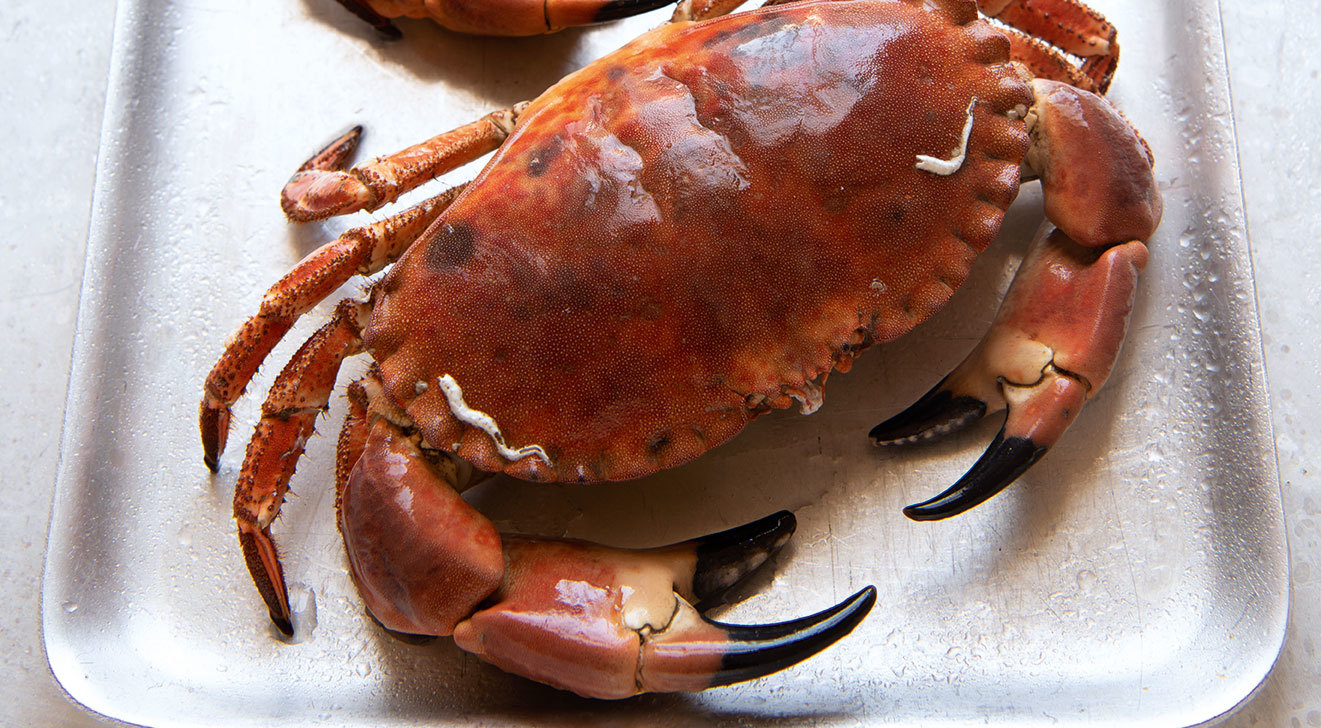
Recipes
Get Premium access to all the latest content online
Subscribe and view full print editions online... Subscribe

